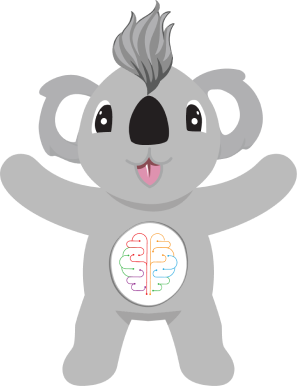ABA Therapy
Discover the transformative power of Applied Behavior Analysis (ABA) therapy, a proven approach to enhancing learning and behavior for individuals facing special needs. Our comprehensive guide delves into the intricacies of ABA therapy, from its foundational techniques to its seamless integration into educational settings. Learn how ABA therapy addresses common challenges with innovative strategies, fostering a supportive environment that nurtures growth and independence. Whether you’re a parent, caregiver, educator, or professional, our resource offers invaluable insights into leveraging ABA therapy for positive behavioral outcomes. Explore our page to unlock the full potential of ABA therapy and embark on a journey of skill development, empowerment, and lifelong learning.
Transformative ABA Therapy for Autism
A Comprehensive Approach
ABA therapy stands as a cornerstone in autism treatment, offering a systematic and evidence-based approach to enhancing the quality of life for individuals with Autism Spectrum Disorder (ASD). By focusing on understanding and modifying behaviors through individualized treatment plans, ABA therapy addresses the unique needs of each person, promoting skill acquisition and reducing challenging behaviors.
Empowering Progress Through Individualized ABA Therapy
At its heart, ABA therapy is about breaking down complex behaviors into smaller, more manageable components. This method recognizes that behavior is learned and thus can be modified through systematic interventions. Tailored to the specific needs and strengths of each individual, ABA therapy plays a pivotal role in special needs education, fostering child development across various domains.
Impactful Outcomes, Enhancing Social Skills and Communication
ABA therapy significantly impacts the lives of individuals with autism, targeting areas that are crucial for daily functioning and social interactions. Through behavioral intervention techniques, ABA therapy effectively enhances social skills, improves communication abilities, and addresses problematic behaviors. This comprehensive approach ensures that individuals with autism can lead more independent and fulfilling lives.
Building Independence and Reducing Behavior Challenges
A key aspect of ABA therapy is its focus on developing independence and daily living skills. By acquiring new skills and reducing behavior challenges, individuals with autism can navigate their environments with greater ease and confidence. ABA therapy’s emphasis on skill acquisition and behavior reduction is instrumental in achieving these outcomes, making it a vital component of autism treatment and special needs education.

ABA Therapy
A Comprehensive Guide to Autism Treatment and Behavioral Intervention
ABA therapy is a scientific and systematic approach to understanding and modifying behavior, particularly beneficial in autism treatment and special needs education. Grounded in the principles of behaviorism, ABA focuses on observable behaviors and their relationship with the environment, employing evidence-based interventions to enhance socially significant behaviors.
Core Principles of ABA Therapy in Autism Treatment
ABA therapy emphasizes several core principles that guide its application in treating individuals with autism and other developmental disabilities.
Behavior is Observable and Measurable
ABA places emphasis on behaviors that can be observed and measured, allowing therapists to target specific behaviors for modification and track progress objectively through individualized treatment plans.
Antecedents, Behaviors, and Consequences (ABC)
Understanding the ABC model aids in identifying patterns and triggers, crucial for effective behavioral intervention in special needs education settings.
Reinforcement and Punishment
ABA utilizes reinforcement to increase desired behaviors and punishment to decrease undesirable behaviors, focusing on positive outcomes in autism treatment through skill acquisition and behavior reduction.
Individualization and Functionality
ABA recognizes the uniqueness of each individual, tailoring interventions to the specific needs and characteristics of the person receiving therapy, enhancing child development and special needs education.
Historical Context and Development
ABA has its roots in the work of behaviorist B.F. Skinner, who laid the groundwork for understanding operant conditioning—the process by which behaviors are strengthened or weakened based on consequences. Gained prominence in the 1960s and 1970s, initially applied to teaching language skills to children with autism. Dr. O. Ivar Lovaas, a pioneer in the field, demonstrated the effectiveness of ABA in improving behaviors and skills in individuals with autism. It is now widely used to address a broad range of behaviors and challenges, not limited to autism. ABA techniques are employed in education, healthcare, business, and more.
Clearing Up Misconceptions About ABA Therapy
ABA therapy is often misunderstood due to several common myths. Let’s address these misconceptions to better understand ABA’s true nature and benefits.
Treatment
Despite its origins in autism care, ABA therapy is not exclusive to autism. Its principles apply broadly, aiding individuals with developmental disabilities, ADHD, and others seeking behavioral enhancements across various contexts.
2. ABA Uses Punishment
Contrary to popular belief, ABA therapy doesn’t rely on punishment. Instead, it focuses on positive reinforcement, using rewards to encourage desirable behaviors and foster a positive environment.
3. ABA Suppresses Individuality
This myth couldn’t be further from the truth. ABA therapy embraces individuality, crafting personalized interventions that consider each person’s unique strengths, challenges, and aspirations.

Starting Your Journey with ABA Therapy
Embarking on ABA therapy involves selecting the right professionals. Here’s a quick guide to help you find experienced ABA therapists
Embarking on ABA therapy involves selecting the right professionals. Here’s a quick
guide to help you find experienced
ABA therapists

Finding KOALAFIED® ABA Therapists
1. Research and Recommendations
1. Research and
Recommendations
Begin by exploring ABA therapy providers near you. Seek advice from healthcare professionals, educators, and local support groups. Utilize online directories for qualified ABA therapists.
2. Credentials and Certifications
2. Credentials and
Certifications
Look for therapists with credentials like Board Certified Behavior Analyst (BCBA) or Board Certified Assistant Behavior Analyst (BCaBA), indicating advanced training and expertise.
3. Experience with Specific Populations
3. Experience with
Specific Populations
Choose therapists with experience in your specific population, whether children, adolescents, or adults, and consider their experience with your particular challenges.
4. Meet and Interview
Schedule meetings to assess their approach, communication style, and how they tailor interventions to individual needs.
Initial Assessments and Evaluations
After finding a qualified ABA therapist, conduct initial assessments and evaluations to design personalized intervention plans. This includes:
1. Functional Behavior Assessment
1. Functional Behavior
Assessment
Understand the purpose or function of specific behaviors to develop targeted interventions.
2. Skill Assessments
Evaluate the individual’s current skill set to establish a baseline for progress tracking.
3. Observations in Natural Settings
3. Observations in
Natural Settings
Gain insights into behaviors in everyday situations to tailor interventions accordingly.
4. Collaboration with Other Professionals
4. Collaboration with
Other Professionals
Work with speech therapists, occupational therapists, and educators to gather comprehensive information about the individual’s needs.
Tailoring ABA Therapy Plans for Success
Navigating the path of ABA therapy requires a personalized approach. Here’s a streamlined guide to creating effective treatment plans
Crafting Personalized Plans
1. Goal Setting
Engage with the individual, family, and professionals to establish SMART goals that are both attainable and impactful.
2. Identifying Key Behaviors
2. Identifying Key
Behaviors
Focus on behaviors that significantly affect daily life, developing strategies to manage difficulties and bolster positives.
3. Customizing Interventions
3. Customizing
Interventions
Adapt treatments to the individual’s unique traits, applying proven ABA methods like reinforcement and shaping.
4. Monitoring Progress
Employ a structured method for data collection and analysis to gauge intervention success and refine approaches as necessary.
5. Open Communication
Ensure regular dialogue with the individual, family, and team to continuously assess and adjust the treatment strategy.

Mastering ABA Therapy Techniques for Better Outcomes
Exploring ABA therapy techniques reveals strategic approaches to achieving positive behavioral outcomes. Let’s dive into three key methods: Discrete Trial Training (DTT), Natural Environment Teaching, and Task Analysis & Chaining.
Discrete Trial Training (DTT)
DTT breaks down complex skills into simpler parts, teaching each component individually. Implementation involves:
1. Identifying Target Behaviors
1. Identifying Target
Behaviors
Pinpointing specific skills or behaviors to teach.
2. Breaking Down Skills
Dividing skills into manageable pieces for focused instruction.
3. Repetition and Reinforcement
3. Repetition and
Reinforcement
Using repetition and positive reinforcement to strengthen desired behaviors.
4. Data Collection
Tracking progress to refine teaching strategies.
DTT excels in teaching foundational skills like language development and self-help abilities, ideal for structured learners.
Natural Environment Teaching (NET)
NET leverages spontaneous learning opportunities in the individual’s natural environment. Key steps include:
1. Identifying Natural Opportunities
1. Identifying Natural
Opportunities
Spotting moments for learning during daily activities.
2. Prompting and Reinforcement
2. Prompting and
Reinforcement
Encouraging targeted behaviors with positive reinforcement.
3. Generalization
Promoting skill application across different settings and interactions.
4. Data Collection
Monitoring progress to inform teaching adjustments.
NET is perfect for enhancing social skills and adaptive behaviors, utilizing the individual’s interests and motivations.
Task Analysis and Chaining
This method involves breaking down complex behaviors into sequential steps, teaching each step systematically. Steps include:
1. Identifying Natural Opportunities
1. Identifying Natural
Opportunities
Spotting moments for learning during daily activities.
2. Prompting and Reinforcement
2. Prompting and
Reinforcement
Encouraging targeted behaviors with positive reinforcement.
3. Generalization
Promoting skill application across different settings and interactions.
4. Data Collection
Monitoring progress to inform teaching adjustments.
Task Analysis and Chaining are versatile, suitable for teaching a variety of skills from self-care to academic tasks, ensuring systematic skill acquisition.
Integrating ABA Therapy into Everyday Life
The success of ABA therapy hinges on parental and caregiver involvement. Here are strategies to blend ABA principles smoothly into daily routines
Building a Supportive Environment
1. Visual Supports
Utilize visual aids like schedules and charts to improve communication and understanding, offering structure and reducing anxiety.
2. Consistent Routines
Establish predictable daily routines to enhance security and skill generalization.
3. Environmental Adjustments
3. Environmental
Adjustments
Modify the environment to minimize distractions and support learning, creating a sensory-friendly space.
4. Interest Integration
Incorporate the individual’s interests and motivators into daily activities to boost engagement and reinforce positive behaviors.
Generalization and Maintenance of Skills
1. Diverse Practice Settings
1. Diverse Practice
Settings
Practice targeted skills in various settings to facilitate generalization across different scenarios.
2. Natural Consequence Exposure
2. Natural Consequence
Exposure
Allow for natural consequences to occur, reinforcing the link between actions and outcomes.
3. Regular Skill Reviews
Conduct scheduled reviews and reinforcements of previously learned skills to sustain behavior strength and prevent regression.
4. Broad Social Interaction
4. Broad Social
Interaction
Encourage interactions with a variety of individuals to generalize social and communication skills.
Strategies for Parents and Caregivers
1. Consistency Across Settings
1. Consistency Across
Settings
Maintain consistency in implementing ABA strategies across all environments to reinforce learning and skill generalization.
2. Therapist Collaboration
2. Therapist
Collaboration
Foster open communication with ABA therapists to align on progress, challenges, and updates, ensuring a unified approach to skill development.
3. Active Participation in Sessions
3. Active Participation in
Sessions
Participate actively in ABA therapy sessions to learn and apply therapeutic techniques in everyday interactions.
4. Setting Achievable Goals
4. Setting Achievable
Goals
Collaborate with therapists to set realistic goals, celebrate milestones, and cultivate a positive learning environment.
5. Home Reinforcement
Extend positive reinforcement techniques at home to foster a motivating atmosphere.

ABA Therapy Enhances Educational Outcomes
Integrating ABA therapy into schools empowers educators to support students’ learning and behavioral needs effectively. Here’s how ABA contributes to educational environments
and behavioral needs effectively.
Here’s how ABA contributes
to educational environments

ABA in School Settings
1. Functional Behavior Assessment (FBA)
1. Functional Behavior
Assessment (FBA)
Identifies the functions of challenging behaviors, enabling targeted interventions within the school setting.
2. Individualized Learning Plans
2. Individualized
Learning Plans
Develops tailored educational goals aligned with ABA principles, ensuring a cohesive approach to skill development.
3. Classroom Behavior Management
3. Classroom Behavior
Management
Implements ABA-based strategies for consistent reinforcement, clear expectations, and structured routines.
4. Social Skills Development
4. Social Skills
Development
Enhances students’ social skills through targeted training, facilitating peer interaction and effective communication.
Fostering Collaboration
1. Communication Meetings
1. Communication
Meetings
Schedules regular discussions between ABA therapists and school staff to align on progress and adjustments.
2. Training and Workshops
2. Training and
Workshops
Provides ABA training to educators and support staff, improving their ability to implement consistent strategies.
3. Data Sharing
Shares relevant data and observations between ABA therapists and educators to inform both therapy sessions and classroom instruction.
4. Problem-Solving Collaboration
4. Problem-Solving
Collaboration
Addresses challenging behaviors or learning goals through a team-based approach, ensuring consistent interventions across settings.
Individualized Education Plans (IEPs)
1. Goal Alignment
Aligns ABA goals with IEP objectives, ensuring ABA interventions support academic and behavioral goals.
2. Progress Monitoring
Implements data collection to track progress on IEP goals, contributing valuable insights into behavioral and academic advancements.
3. Collaborative IEP Meetings
3. Collaborative IEP
Meetings
Includes ABA therapists in IEP meetings to provide insights and collaborate on adjustments based on shared data and observations.
4. Transition Planning
Supports transition planning for students, ensuring continuity in implementing effective ABA strategies.
Navigating Challenges in ABA Therapy
Even with ABA therapy’s proven effectiveness, challenges inevitably arise. Here’s how to tackle and overcome these hurdles
Addressing Common Challenges
1. Resistance to Change
Gradually introduce changes, reinforcing positive behaviors to encourage flexibility.
2. Generalization Difficulties
2. Generalization
Difficulties
Implement systematic generalization training, practicing skills in various contexts to enhance transferability.
3. Maintaining Motivation
Create personalized reinforcement plans based on the individual’s interests, regularly reassessing and adjusting strategies.
4. Overcoming Communication Barriers
4. Overcoming
Communication Barriers
Use Augmentative and Alternative Communication (AAC) devices and train individuals and caregivers on effective use.
Continuous Support for Individuals and Families
1. Education and Training
Continuously offer both to caregivers and families, equipping them with the skills to reinforce the principles of ABA.
2. Regular Check-ins
Schedule regular check-ins to address concerns, celebrate achievements, and provide guidance.
3. Access to Resources
Provide access to resources, empowering families with tools to reinforce ABA strategies independently.
4. Community Engagement
Facilitate community engagement by connecting families with support groups or events, building a network of support.
Problem-Solving and Adapting Strategies
1. Continuous Assessment
Regularly assess intervention effectiveness through data collection and analysis, identifying challenges early for proactive resolution.
2. Collaborative Problem-Solving
2. Collaborative Problem-
Solving
Foster a collaborative environment for sharing insights, discussing challenges, and collective problem-solving.
3. Individualized Strategies
Recognize each individual’s uniqueness, tailoring interventions based on ongoing assessments and adapting strategies to evolving needs.
4. Flexibility in Reinforcement
4. Flexibility in
Reinforcement
Be adaptable in reinforcement strategies, evaluating and modifying reinforcers to maintain motivation.

